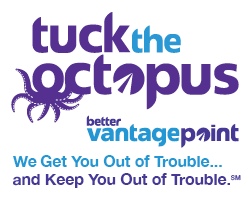I was reading a great article about attribution on MarketingLand.com when it struck me, “Why are we so far behind other segments?” We are being beaten by socks. SOCKS!
Socks and cars are as different as can be
Socks are what’s called a low-involvement purchase; limited thought goes into the purchase and there’s very little risk to the consumer. Cars on the other hand, are a big purchase that consumers tend to think about a lot and research extensively. Consumer feel that the purchase of a car carries more risk than a pair of socks and they’re right – automobiles are the biggest depreciating asset most consumers ever buy, unless they’ve bought a home with wheels underneath it or a large boat. Automobiles are the quintessential high-involvement purchase.
But there are some similarities…
Most sock purchases aren’t made directly off a manufacturer website just as most cars aren’t bought or sold that way either – they are purchased in stores (dealerships). They are Research Online, Purchase Offline (ROPO), also known as Research Online, Buy Offline (ROBO) or Online-to-Store (O2S-Factor) items. In the case of the socks, while the purchase may be made online, but it doesn’t have to be made from the manufacturer – it can be made from an (online) store. The socks looked at in the article were a little higher end, made by SmartWool. I’ve purchased them in the past and yes, they are extraordinary socks, but they are just socks.
Where socks are beating us
Let’s start with the fact that they are employing advanced attribution analytics. They understand that many of their customers are ‘multichannel’, using multiple sources to do their research. Because of this fact, the sock guys aren’t just relying on Google Analytics. Google Analytics does a great job on one very specific task – looking the performance of one particular channel out of many used; your website. Now remember the sock guys don’t sell the majority of their socks using ecommerce from their website (just like most car dealers don’t sell most of their cars using ecommerce from their website), the website is just one channel out of many used. They want, no, they need to see the big picture.
The sock guys have learned to love third parties
Rather than saying, “We’re just going to concentrate on OUR channel, our website, the one we own”, the sock guys wanted to look at the hard data. The hard data is pretty clear; when consumers used multiple channels they spent more money and they converted at a significantly higher rate. They also dug into influence, “The data showed the influence one publisher had in driving users to the site at the start of the customer journey, who later converted via other channels.” I read where one marketer in our segment is concentrating on folks “who are 12 days or less from purchasing a vehicle”. That’s great, but has he lost the ability to influence this potential customer to another dealer by not being around a little earlier? SmartWool sock shoppers average about 3.4 touch points per journey – car shoppers use 24 (on average). Using advanced attribution tools and analysis simply makes more sense (and makes more dollars) than reducing your concentration down to just your website.
The Customer Journey matters
Lately, I’ve had some fun with the folks who don’t seem to place much credibility in the importance of the ‘Customer Journey’. They seem to concentrate on the last the click – the lead (when there is one). Not that the lead (when there is one) doesn’t matter, because it surely does. But leads are just a small part of a much bigger picture. I agree with the folks on that side of the argument, that the folks handling leads and calls need to pay attention to the task at hand, but I’d submit to them, gaining a little insight into what happens before the last click may be very beneficial. The big picture needs to be paid attention to by the Dealer Principal, the General Manager, and the Marketing Manager. We are well past the point in time when we should believe that the analysis of the Consumer Journey and caring about sales and profits are mutually exclusive ideas.
Is our industry ready to leave the dark ages (and stop letting socks beat us?)








